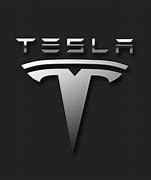Tesla Reports Earnings on Wednesday: What Investors Should Expect

Tesla’s (TSLA) second quarter earnings is one that is
highly anticipated by many investors and analysts because it’s vehicle delivery
numbers beat analysts’ expectations. All attention is on Tesla to see if it
would beat analysts’ profits expectations as well, earning it a spot in the
S&P 500 Index. The company is said to report its second-quarter earnings by
the close of Wednesday’s market.
Here are a few key things to watch out for before
market close on Wednesday:
·
Effects of Price Cuts: In the course of
the year, Tesla announced several price cuts both in the United States and in
China. The automaker, reportedly, cut prices of Model Y unit and reduced the
prices in its lineup in late May. This move alone creates uncertainties among
analysts, wondering if at all the move is an impressive business move or a red
flag on falling organic demand. Analysts and investors are keen to find out how
much impact the price cuts on the 90,650 vehicle deliveries had on Tesla’s top
line.
·
Cash Flow: Shares of Tesla have substantially
increased to all-time highs over the past months, amid the coronavirus pandemic.
As of market close on Monday, Tesla’s share price was $1,568.36, and $1,580.00
after hours. The automaker currently stands as the most valuable in the world,
with its valuation hitting more than $300 billion. Some critics and analysts
like CFRA analyst Garrett Nelson believe that Tesla stock is overpriced.
“[Tesla] shares have gotten ahead of
underlying fundamentals and do not appropriately reflect various risks
surrounding the story, including the fact TSLA is entering a major spending
cycle with the construction of Gigafactories 4 and 5,” Nelson wrote. While the
company believes that it can effectively increase production across the world,
and uses that construction of its Gigafactories among other reasons to justify
its high valuation, the factory projects can cause a “significant drag on free
cash flow over the next several quarter.”
·
China Sales Market: Prior to the COVID-19
pandemic, China had more potential of becoming Tesla’s major sales market.
The pandemic caused China EV demand to fall, however, there seems to be a
rebound from the earlier lows, as demand for EV gradually becomes steady.
According to a report by the China’s Passenger Car Association (CPCA), 14,954
of Tesla’s Model 3 vehicles were sold in June, 11,095 units were sold in May,
and 3,635 units sold in April. So far, there has been a strong demand for the
Model 3 in China, and some analysts believe that it is an advantage for Tesla
in the second quarter.
·
Full-Year Outlook: To the surprise of
analysts and investors, Tesla said it delivered 90,650 units of vehicles over
the last three months, ending in June. The delivery numbers beat Wall Street’s
expectations of 72,000. Tesla is yet to update its full-year guidance for its deliveries.
During the last quarter report, the company said it would “revisit” its
full-year delivery guidance in the second quarter. Hopefully, investors will
have what to look forward to by the end of the year. At the beginning of the
year, the automaker told investors that it would deliver 500,000 units in 2020.
So far, the automaker has delivered only about 179,000 in the first half, less
than half of the expected total deliveries.
Here’s what some analysts have to say about Tesla’s
second quarter earnings report:
“While
Street numbers are all over the map and looking for red ink this quarter, we
are modeling profitability with the 90k delivery number and continued GM
efficiency/cost cutting getting Musk & Co. away from the red ink.” -
(Daniel Ives of Wedbush)
“We
believe that any intermediate-term success during its earnings call tomorrow is
now fairly reflected in the stock price… [Tesla] should show progress on
several fronts.” - (Joe Osha of JMP Securities)
“Tesla stock has seemingly been making new all-time highs every day, support by leaks of the strong 2Q and potential inclusion into the S&P 500 and more broadly by very positive investor sentiment toward electrification which is likely pulling in large ESG driven fund flows that have limited options in public markets.” – (Emmanuel Rosner of Deutsche Bank).


Be the first to comment!
You must login to comment